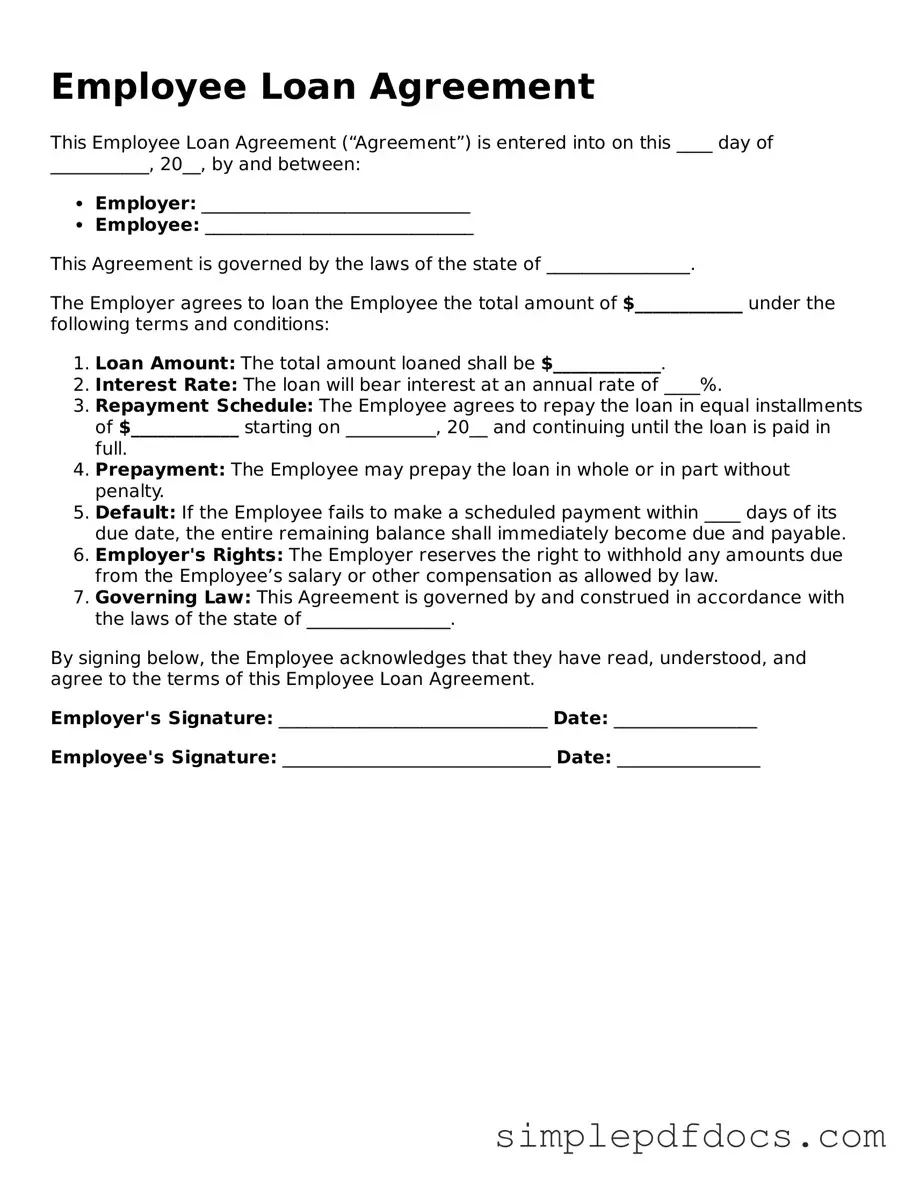Attorney-Approved Employee Loan Agreement Form
An Employee Loan Agreement is a formal document outlining the terms and conditions under which an employer provides a loan to an employee. This agreement helps ensure clarity and mutual understanding regarding repayment schedules, interest rates, and any other relevant details. By establishing clear expectations, both parties can maintain a positive working relationship while navigating financial assistance.
Get Document Here
